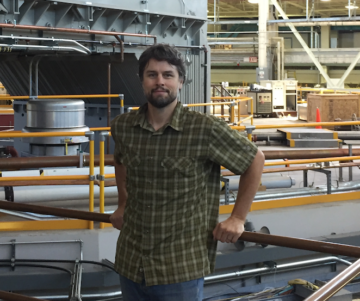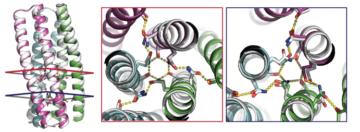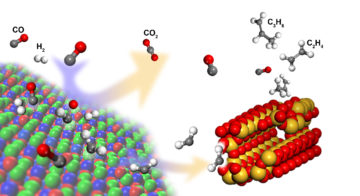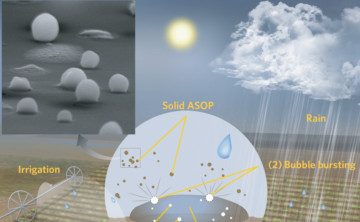As operations supervisor at the ALS, Tom Scarvie works with the accelerator operators and floor operators to make sure that the machine runs as well as possible and that beamline work is done safely and according to policy. The operations team strives to make sure the ALS is running reliably and at top quality all the time. Scarvie is also one of three chairs of the ALS Beamline Review Committee and he chairs the Accelerator Review Committee. Read more »
ALSNews Vol. 375
AUGUST 10, 2016
Improving Alloy Memory by Tuning Material Composition
Shape memory alloys can “remember” their original form and return to it repeatedly when heated. To gain structural insight into a new alloy capable of sustaining millions of cycles without failure, researchers performed x-ray Laue microdiffraction at ALS Beamline 12.3.2. Read more »
Validation of Novel Proteins Inspired by Nature
Designed proteins containing hydrogen-bonding modules have been validated by crystallography and SAXS. The ability to design synthetic molecules that combine the specificity of DNA-like binding with protein function opens up huge opportunities for the fields of synthetic biology and materials science. Read more »
New Catalyst Boosts Selective Formation of Olefins from Syngas
Experiments at the ALS have helped to explain how a new catalyst significantly boosts the selective formation of light olefin molecules—important building blocks in the petrochemical industry—from syngas. The new process could allow for the use of alternative syngas feedstocks that save water and energy. Read more »![]()
![]()
A Cleansing Rain Falls; a Soil-Filled Mist Arises
Rain’s reputation for cleansing the air may come with a caveat after new findings, including STXM and NEXAFS data, show that raindrops play a role in generating airborne organic particles. The findings could influence how scientists model our planet’s climate and future. Read more »
SINS Reveals Dopant Effects in Plasmonic Materials
Using synchrotron infrared nanospectroscopy (SINS) at the ALS, researchers have for the first time probed infrared plasmonic excitations in single nanocrystals. This allowed the pinpointing of dopant effects on an emerging class of materials with potential for molecular-sensing and energy-harvesting applications. Read more »![]()
![]()





